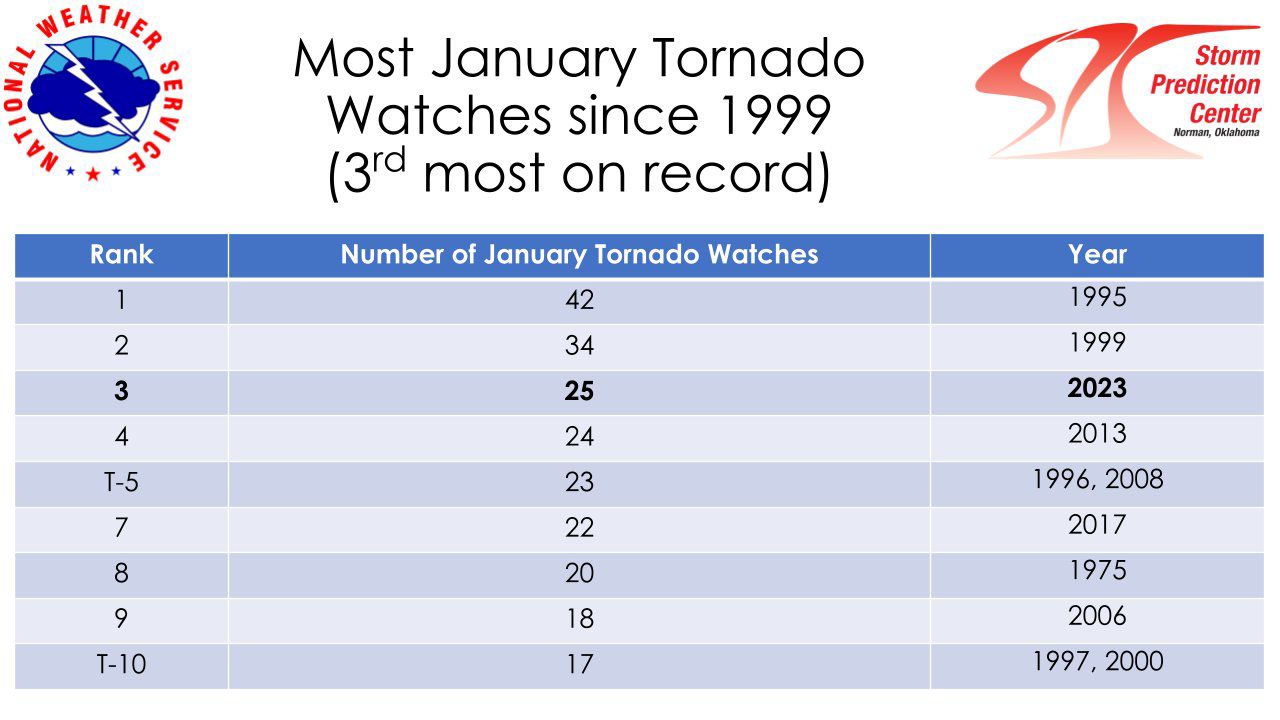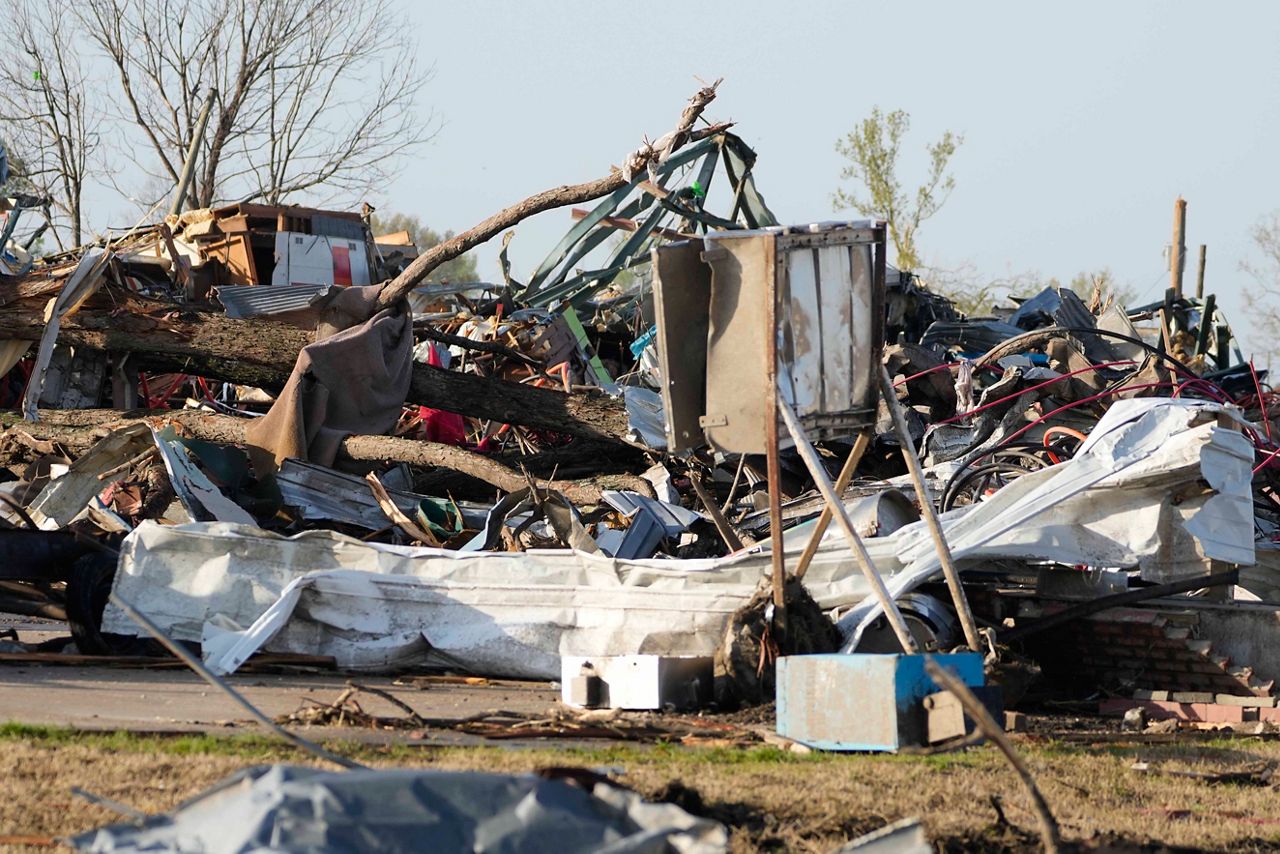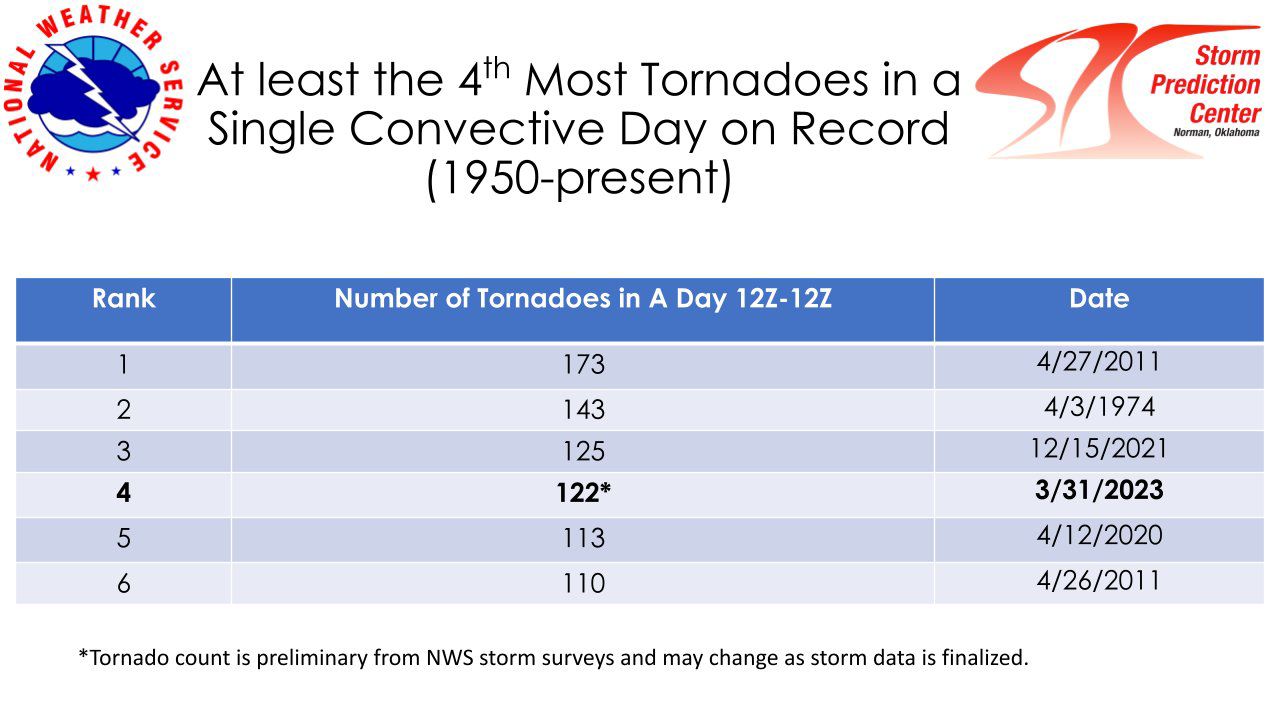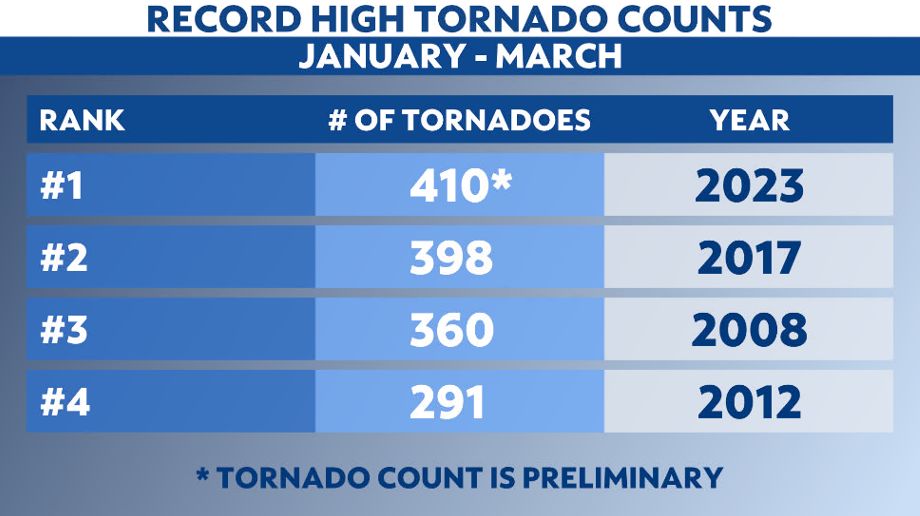The severe weather season not only got off to an early start, but a possible record-breaking one as well for tornadoes.
A preliminary report shows that more than 400 tornadoes formed between January and March.
Even though severe storms can spawn tornadoes at any time of the year, the number of tornadoes is not typically very high in winter.
The record number of tornadoes confirmed during the first quarter of 2023 is a cause for concern, especially as we head into the late spring and summer months.
This past winter delivered a few cold snaps, but it was overall mild compared to average.
While springlike temperatures contributed to record-low snowfall in many cities, it also could be a factor that brought an uptick in severe weather outbreaks and tornadoes at the start of the year.
According to the Storm Prediction Center (SPC), survey teams confirmed 223 tornadoes in the U.S. between the first two months of 2023.
The year started off on an impressive note, with January alone accounting for 168 tornadoes, which was the second highest ever recorded for the month since 1950.

While preliminary counts were not as high for February, it was still an active month. The 55 tornadoes confirmed over the 28-day month was almost double that of the 1991 to 2010 average of 29.
An increase in active weather isn’t atypical for March. The month sees a rise in tornado numbers- and last month was no different.
Like the prior two months, March tallied an above-average number of tornadoes. Some of which demolished communities and took lives.
While a severe weather outbreak spun up over 30 tornadoes within the first few days of the month, the first half of March wasn’t all that alarming from a severe weather standpoint, so to speak.
However, a more active weather pattern kicked in during the month’s final two weeks, bringing an even bigger uptick in severe weather outbreaks- and a spike in the year-to-date tornado count.

The last day of the month, March 31, topped the charts for seeing the fourth most tornadoes with in 24-hour period.
According to the SPC, a preliminary 122 tornados were confirmed on that day alone.

Prior to storms firing up that same day, the SPC even issued a high risk (level 5 of 5) for the first time since March 2021 for two areas along the Mississippi River Valley.
The NWS confirmed two EF-4 tornadoes at the end of the month, one devastating the Mississippi town of Rolling Fork on March 24, and the other annihilating Keota, Iowa during the March 31 outbreak. Both long-track tornadoes left behind extensive damages.
The Keota tornado didn’t cause any deaths, but other tornadoes confirmed on March 31, including eight EF-3s, were enough to cause catastrophic damage and multiple deaths and casualties in Arkansas, Illinois and other parts of the Midwest.
Please note that all tornado counts for 2023 are preliminary counts and are subject to change by the end of the year once actual counts are confirmed and verified.
The difference between counts is usually due to one tornado being accounted for twice, which occurs when a tornado travels between two different National Weather Service (NWS) offices.
Because of this, the SPC cautions comparing the preliminary counts and actual accounts.
As of April 11, the SPC announced that preliminary 410 tornadoes were confirmed during the first quarter of 2023, ranking it as the highest tornado count on record taken during the first three months of the year.

While it’s no surprise that the southern Plains, Deep South and Midwest accounted for the bulk of the tornadoes that spun up, other parts of the country that don’t frequently encounter tornadoes also confirmed reports- and even outbreaks.
After confirming two tornadoes in February, Southern California got hit again with another three in late March.
New Jersey also confirmed one tornado in February. The Garden State then saw its second largest tornado outbreak a little over a month later, when the NWS confirmed seven tornadoes on the evening of April 1.
Within the first three months of the year, tornadoes took 56 lives, making it the most-to-date tornado fatalities since 2012.
Unfortunately, over 80% of the tornado-related deaths during the first quarter of 2023 were from March alone.
With 47 deaths, it ranked as the fourth deadliest March on record (in terms of tornado-related deaths).
Whether the season is peaking early, or the worst is still yet to come, it’s important to always stay prepared and weather aware no matter where you live.
Our team of meteorologists dives deep into the science of weather and breaks down timely weather data and information. To view more weather and climate stories, check out our weather blogs section.
Shawnie Caslin - Digital Meteorologist
Shawnie joined Spectrum News as a Digital Meteorologist in 2021. After discovering her love for weather as a child, she earned a Bachelor's of Science in Meteorology from Rutgers University in 2015. Prior to joining Spectrum, Shawnie worked behind the scenes at local and national networks as a meteorologist and weather graphics producer in New York City. She thoroughly enjoys working in the media and is always passionate to explore the different ways weather impacts our everyday lives.










